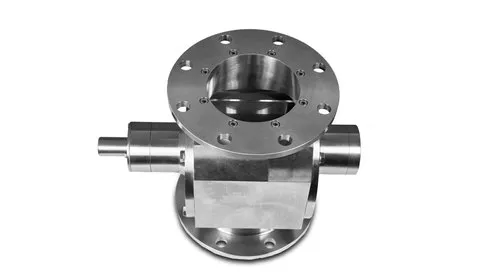
Many sectors that deal with bulk goods depend on rotary airlock valves to guarantee both safety and efficiency. Controlling the flow of materials between zones of different pressures without allowing air to travel between them depends on these precisely built tools. From food processing to medicines to manufacturing, the airlock rotary valve is meant to maintain an airtight seal while allowing things like powder, grains, or dust to pass without incident.
Understanding these valves helps companies to maximize their operations, reduce product loss, and raise general output. Let’s now examine closely the construction, operating idea, and significance of rotary airlock valves.
Rotary Airlock Value Structure and Components
Usually composed of stainless steel or cast iron, rotary airlock valves are built with a robust casing to resist demanding surroundings. Inside the valve, the rotor runs inside the casing and consists of many vanes or blades. Maintaining a constant airlock, these blades create sealed compartments allowing items to enter from one side and discharge on the other.
The rotor, shaft, house, and end coverings are the most often occurring parts. Tight seal creation depends on the design of these components, which stops air from leaking as the substance travels through the valve. The effective running of the valve depends on its structure, particularly in the management of sensitive or expensive elements.
Rotary Airlock Valves: Their Operation
A rotary airlock valve works essentially with the rotor rotating at a constant speed driven by either a pneumatic system or gravity. Materials descend into the rotor from above as it revolves, filling its pockets. Maintaining the airtight seal between the two chambers, the rotor then keeps revolving releasing the contents into the next level of processing.
Rotary airlock valves are particularly crucial because of their capacity to maintain separate pressure zones when moving goods. Often employed in combination with dust collectors, hoppers, or conveying systems, they are flexible enough for many other industrial uses.
Value of Rotary Airlock Valves in Different Sectors of Industry
In sectors where material handling is vital, rotary airlock valves are indispensable. Materials moved without air leakage assist to preserve pressure differentials, reduce product loss, and avoid contamination. This not only increases operating efficiency but also protects personnel from possible risks and equipment from damage.
In essence, maximizing industrial operations depends on knowing the design and purpose of a rotary airlock valve. These valves support safety, material protection, and higher production in addition to helping to maintain airtight seals between regions of varying pressures. Investing in a premium airlock rotary valve will prove its worth in many different sectors as it will result in more effective operations and eventually lower expenses.






